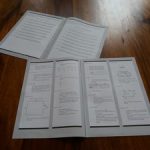 Picture this: A child takes home maths homework from school and, with a determination to complete it in good time, spends 45 minutes on it, then happily tidies it away to be taken back to school. It’s very quickly forgotten about until the teacher asks for it in. Is this the best way to be learning?
Picture this: A child takes home maths homework from school and, with a determination to complete it in good time, spends 45 minutes on it, then happily tidies it away to be taken back to school. It’s very quickly forgotten about until the teacher asks for it in. Is this the best way to be learning?
Possibly not. Imagine you are learning a new language: French for example. You’ve just learnt a new word (‘la voiture’ – which means car). Then you spend 10 minutes repeating the word over and over before finding something better to do and not even thinking about it until a week later when you’re asked what the word was. How likely is it that the word will be recalled easily?
Now imagine taking a different approach. You learn the word but then only spend a minute practising it. The next day you spend another minute practising, and this continues each day until after a week you’re asked to recall it again. Would you be able to recall the word easily? Probably, due to the daily repetition of saying the word. This approach highlights the benefits of ‘little and often’ and you can apply it to many forms of learning.
11+ students preparing for the maths exam, for example, have many n ew concepts to practise. If they learn a new method e.g. increasing an amount by a percentage, instead of giving them a sheet to practise all at once, why not break it down and give them one or two questions on increasing by a percentage to complete a day? They are far more likely to retain the new method, be more likely to apply it in the future, and be less tired because of it.
ew concepts to practise. If they learn a new method e.g. increasing an amount by a percentage, instead of giving them a sheet to practise all at once, why not break it down and give them one or two questions on increasing by a percentage to complete a day? They are far more likely to retain the new method, be more likely to apply it in the future, and be less tired because of it.
Try it for the next piece of homework instead of rushing to do it on a Thursday evening. You may just notice a difference over the long term.
Get in touch
Your message was successfully sent.
Thank You!

 PL5 3NG
PL5 3NG